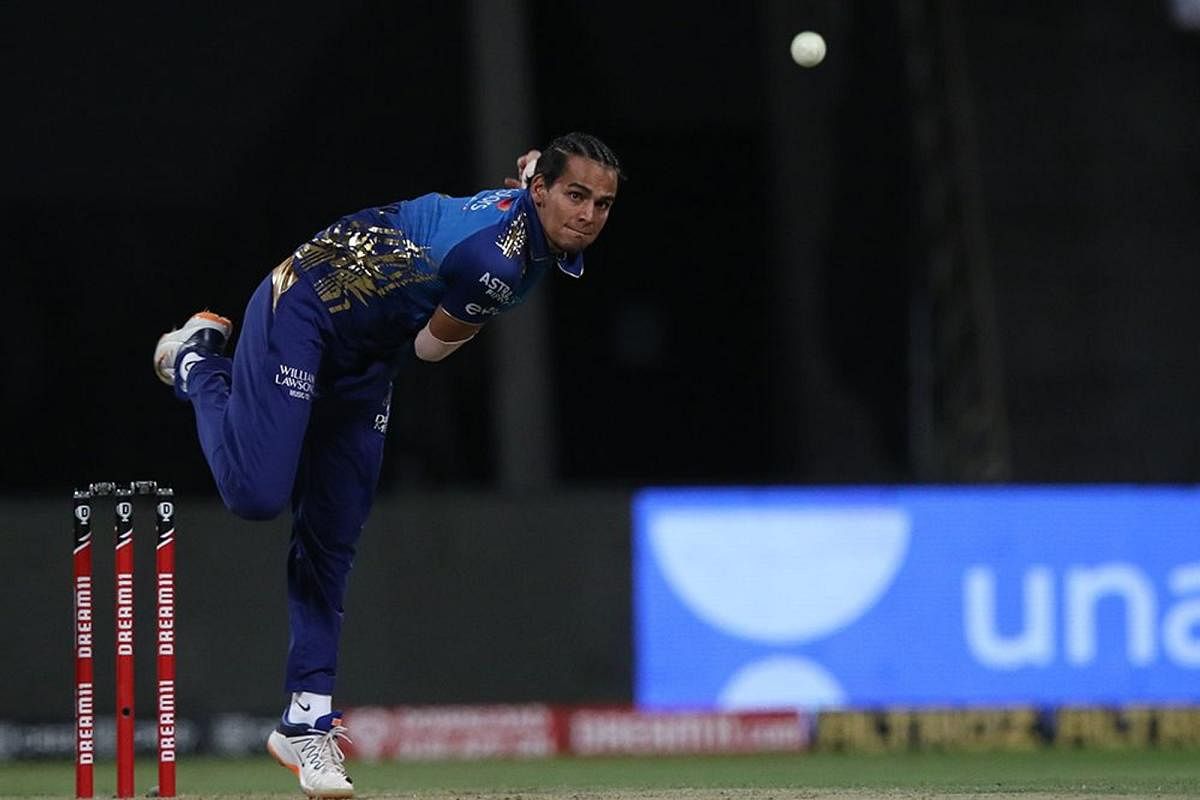
It’s a batsman’s game, they say. Bowlers don’t like the adage as much as they loathe the reality it reiterates. Unfortunately, for the bowlers, it has only gotten worse since 2008.
Some will argue that the game would have evolved to where it stands now irrespective, but the popular narrative is that the Indian Premier League triggered a tectonic shift in how batsmen began to view bowlers, how audiences went on to consume their cricket and how bowlers brazenly retaliated against these run-hungry, devil-may-care batsmen.
Bowlers haven’t managed to supersede the front-on visual of a batsman in flow, and never will, but they have come up with ways to make them look garish to those who pay good money to almost singularly watch them swat bowlers around.
It’s revenge they are after, but they still only have 5.75 ounces of a sphere to do this. The batsmen have 38 inches of consciously-engineered wood to dole the reminder, and they often do. But somewhere along the way, bowlers - leg-spinners in particular - try to change it up and shift the weight to the other end of the scale.
Owing to the range of motion which the wrist allows, leg-spinners can get the ball to do more and seem a lot less obvious than a conventional off-spinner. Of course, off-spinners have come up with their bag of variations in the form of doosras, carrom balls and knuckleballs of late, but most of them still rely on using the crease, staying stringent with lines and lengths, and occasionally, using flight.
Which is why Royal Challengers Bangalore’s Washington Sundar - devoid of any flight - is the second-most effective bowler this season with an economy of 5.65 after 41 overs, most of which came in the Power Play.
R Ashwin, on the other hand, won’t settle for putting pressure on the batsmen to force a mistake. In his attempt to be an artist, off-season efforts result in unheard of variations, but he is talented and confident enough to try them at the highest level. When it comes off, he’s hailed as a genius. When it doesn’t, he goes back to the drawing board (tennis-ball cricket).
Sunil Narine does exercise some experimentation beyond the carrom ball, especially in this edition where he has begun to hide the ball behind his right leg before release. Difficult as it is, it ensures the batsman doesn’t know what he’s about to deliver until Narine’s arm is at the point of release.
Strangely enough, that is exactly what Jeff Thompson used to do, but in the case of the legendary Australian paceman, it was to accommodate his peculiar bowling action, not to conceal what he was about to unleash. In that sense, what Narine is onto is erudite, though, visually not as hard.
Speaking of genius, Rashid Khan is well on his way to becoming a bonafide legend for what he brings to the table in the IPL. His whiplash action forces the batsmen to do a double-take, but by the time they have deciphered the whirl, their bat isn’t anywhere near where it should be.
He’s the most economical bowler so far, conceding five runs per over in 48 overs. He’s fifth on the top-wicket-taker's list with 17 scalps. Three out of the top-ten best individual bowling performances belong to him.
It’s no accident that the most impressive proponents of the googly - Rashid and Yuzvendra Chahal (18) - feature among the highest wicket-takers this season. In fact, Varun Chakravarthy (15), Ravi Bishnoi (12), Rahul Chahar (14) and M Ashwin (10) aren’t far behind, and they all possess wicked googlies.
To think when Bernard Bosanquet unveiled this delivery in circa 1900, he was mocked furiously until he gave up the sport almost entirely.
Since then, leg-spinners have grown leaps and bounds with almost every single one of them possessing more variations than an over can hold. Bosanquet’s spirit now lives on in the likes of Bishnoi and Rahul Chahar, who have begun bowling leg-spin with a between-the-umpire guard.
Body drifting away because of momentum, it forces the experimenter to open up awkwardly on landing before bowling. Lest we forget, being in control of a regulation leg-break is tough enough. Adding this alien variable makes it that much more difficult, but Bishnoi and Rahul have been doing this for a while at the domestic circuit and are now confident enough to allow themselves to be vulnerable at the IPL level.
A hypothesis that comes to mind is that the pandemic-instigated break gave bowlers time to work up the discipline and the courage to land said variations in the right areas. Another factor is the size of two of three grounds in the UAE. Spinners aren’t afraid to toss the ball up and/ or reveal variations because batsmen aren’t nearly confident going for a big hit in this edition. Basically, margins for error aren’t as fine in this edition as they used to be in grounds in India.
One cannot also look beyond the reality that batsmen, a sizeable population of the new generation, play away from their body to generate power to their hits. Right-handers clear their left leg to make room for a flash. While it looks pardonable when the ball strikes the blade, it more often than not results in inside edges and mistimed strokes. Which is why googlies and flippers put them in uncomfortable positions.
While all of these hypotheses hold a semblance of truth to them, the innovative spirit of spinners at large cannot be ignored or denied. After all, they are trying to find an ounce of advantage in a craft which doesn’t give them much to work with.
One can only hope that in their attempt to reinvent the wheel they don’t forget the axle.
